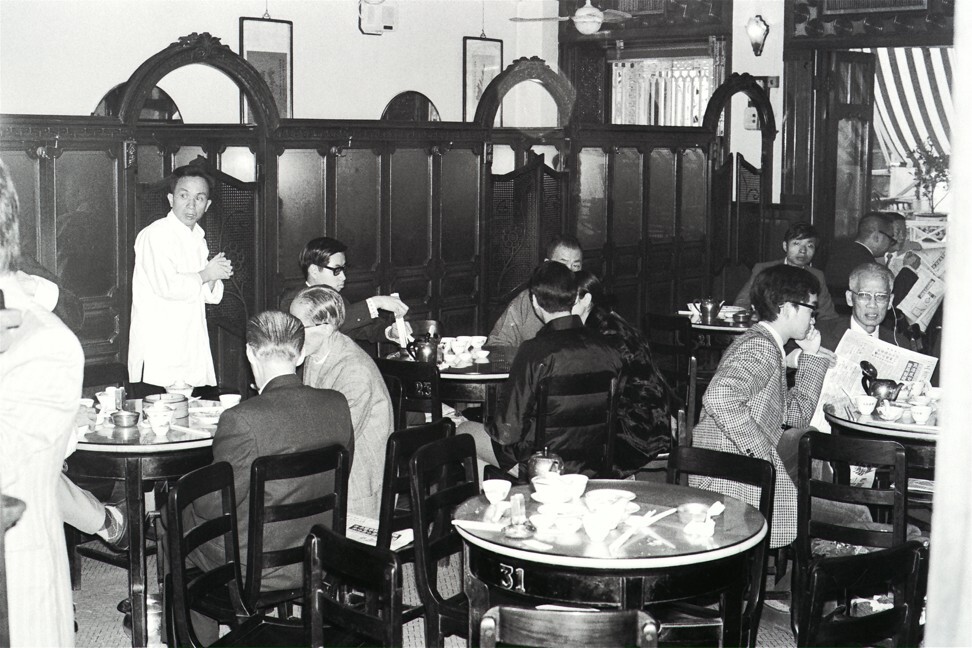
How Western tastes for Chinese food were shaped by Hong Kong restaurants
- Many local eateries were daunting for non-Chinese speakers, who were inevitably steered towards the same few dishes
- ‘The Duck Farm’ was a hit with colonial British military personnel for its ‘real’ Chinese food, like that served back home
As numerous period memoirs from the mid-19th century onwards attest, European residents could live for decades in Hong Kong, or elsewhere in treaty port-era China, without ever being invited into a Chinese home for a meal. Habits of hospitality were too different, language barriers divided and cultural prejudices were too strong. So to sample the local cuisine, restaurants had to suffice. But that detour brought its own challenges.
Until not so long ago, Chinese restaurants in Hong Kong were forbidding places for non-Chinese speakers; many still are. Language was the primary hurdle, with waiters who spoke little or no English and were far too busy to accommodate foreigners. Usually, but not always, someone materialised to deftly steer European patrons to the only dishes it was assumed they would eat – sweet and sour pork, fried rice and chicken with cashew nuts.
Tea, inevitably, was inferior, highly scented jasmine – as with much else, the underlying presumption was that most wouldn’t know good Chinese tea from bad. And most Europeans only drank beer anyway, it seemed.
Some establishments discouraged Western patronage through passive-aggressive methods: menus entirely in Chinese or an “English” menu of time-tested favourites that reflected actual or presumed food prejudices. Inevitably, this self-selection meant many delicious Chinese recipes – especially homestyle Cantonese dishes – were never enjoyed by Western patrons.

A reliable benchmark of food standards was how many Chinese patrons dined in an establishment: if there were more Westerners, the food was probably lacking in authenticity or quality.
In small places such as Hong Kong, most food-related information is conveyed by word of mouth, and certain Chinese restaurants became known among resident Westerners as “safe” or “reliable”. In essence, this meant the waiters didn’t bite, you could get what you wanted without too much sign language, food was on the tasty side of edible and unlikely to cause a stomach upset, beer and soft drinks were cold and ambient noise levels tolerable.
In times past, a popular lunchtime venue for personnel working at Shek Kong military camps was “The Duck Farm”, a Chinese establishment informally named after the owner’s other business enterprise, which the tables overlooked. The owner had a much younger relative who had lived in Britain for a few years and worked in a Chinese takeaway in Leicester, or Nottingham, perhaps. Consequently, Jacky (or Jimmy, or Johnny – it’s hard to recall) “knew” just what “Chinese chow” British servicemen preferred, and dished it up generously, with constant smiles and ready banter. Satisfied patrons were often heard making remarks along the lines of “This is real Chinese food, like you’d get back home in the UK, not that bloody awful muck we ended up with down in Kowloon that night …”
More than 30 years later, “The Duck Farm” is long gone and a straggling mess of open container storage and wrecker’s yards marks the spot of so many uproarious Friday lunches. Sometimes, not often, I catch sight around Kam Tin of Jacky – or was he Jimmy, or Johnny? – out with his infant grandchildren, and we smile, nod and pass by. How long ago that other, vanished life now seems.

